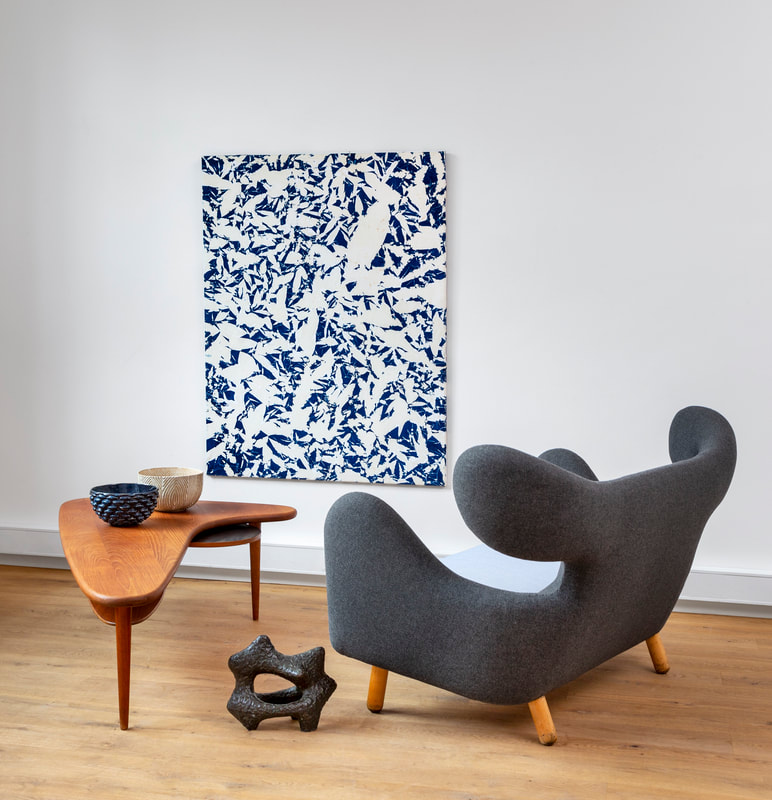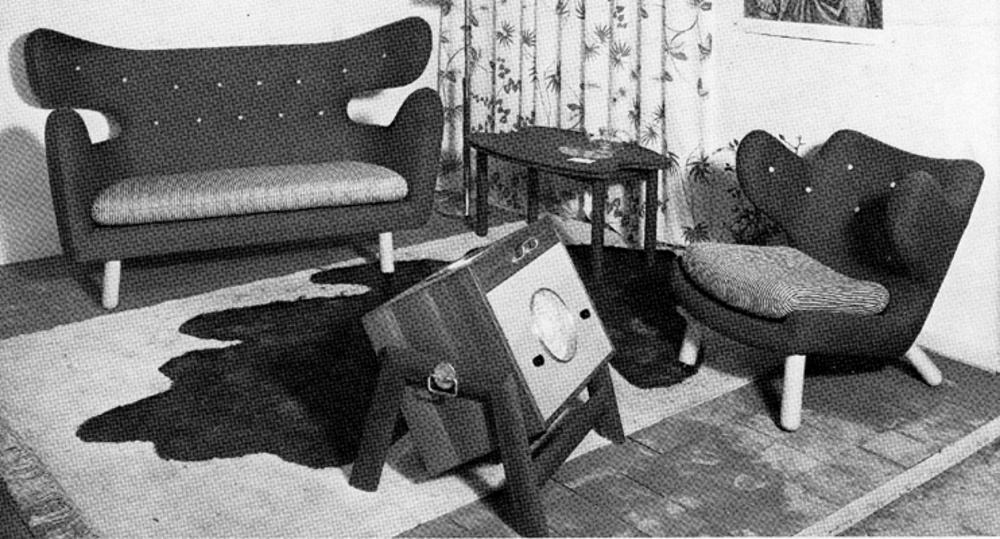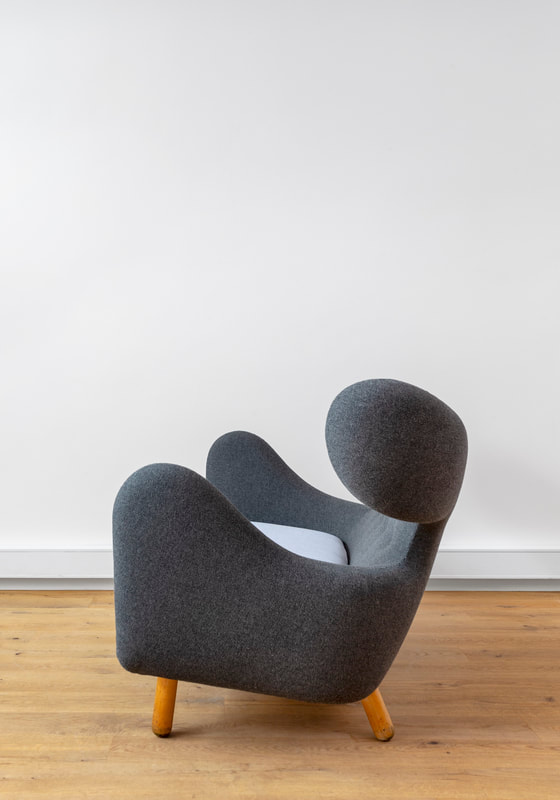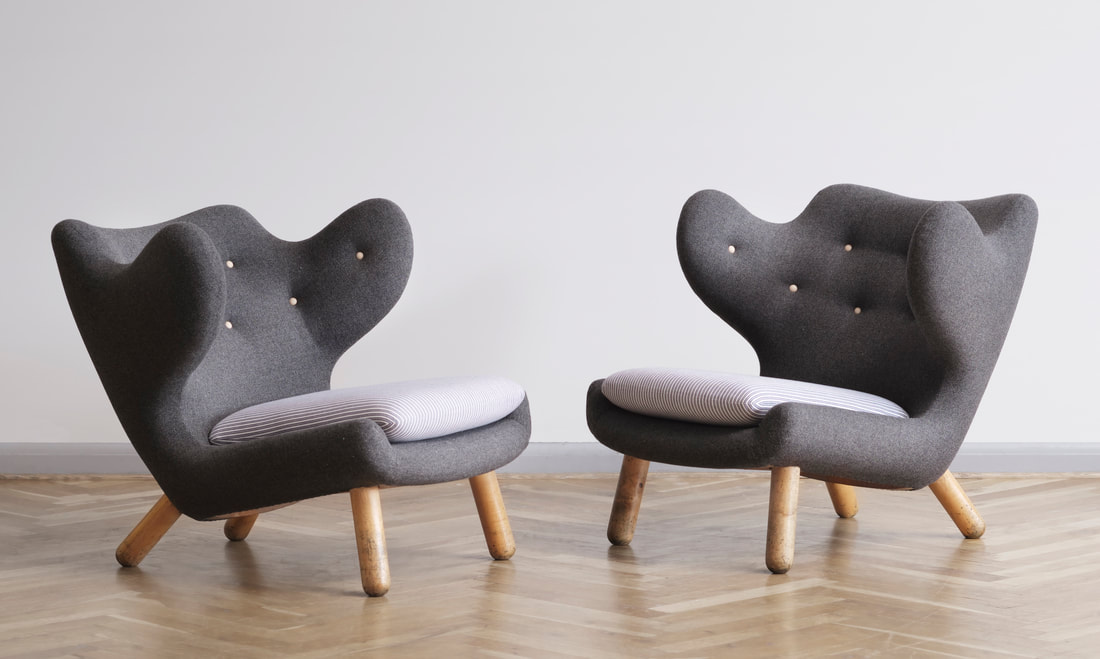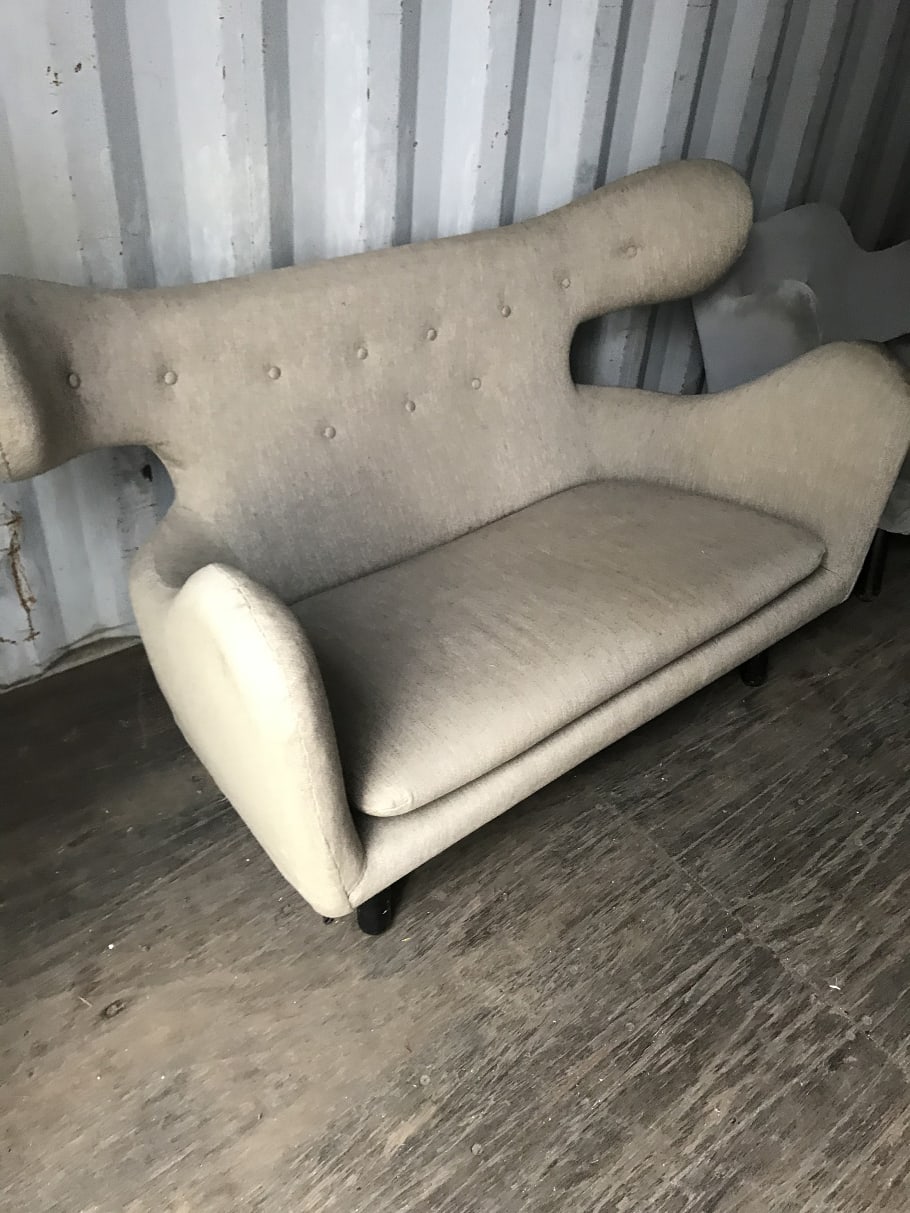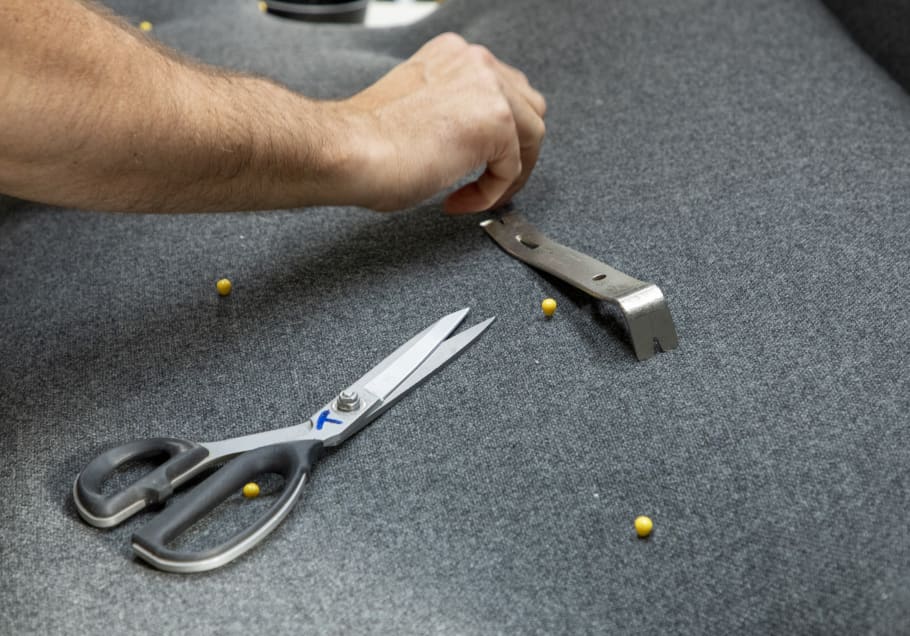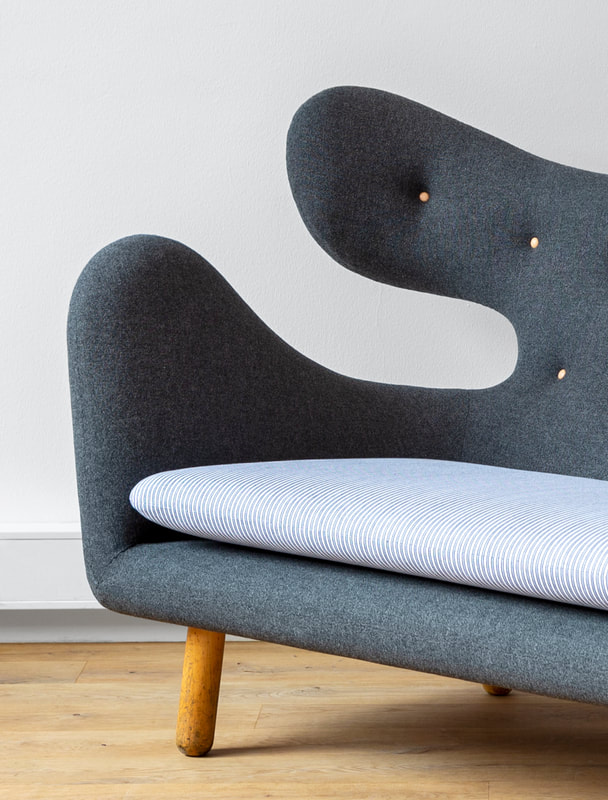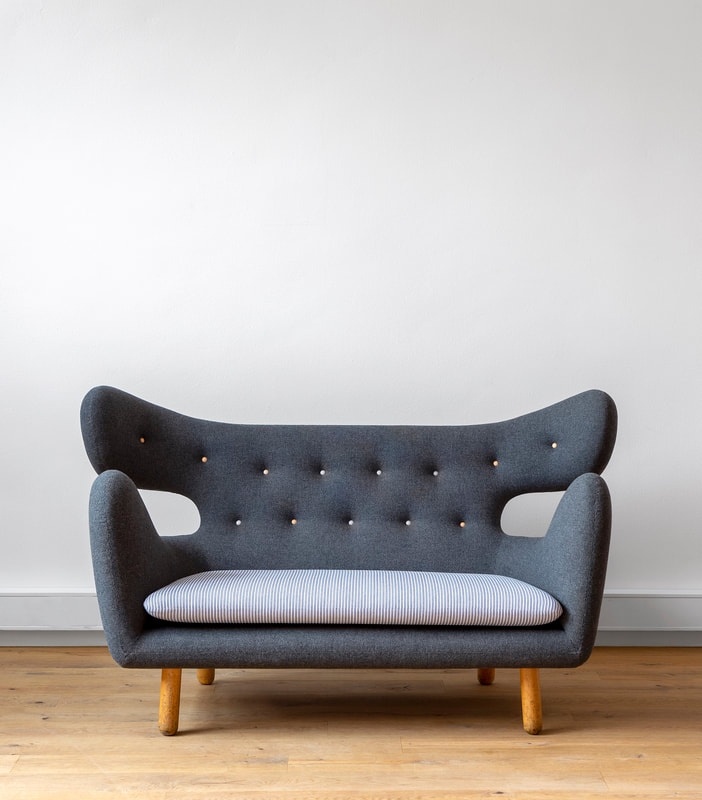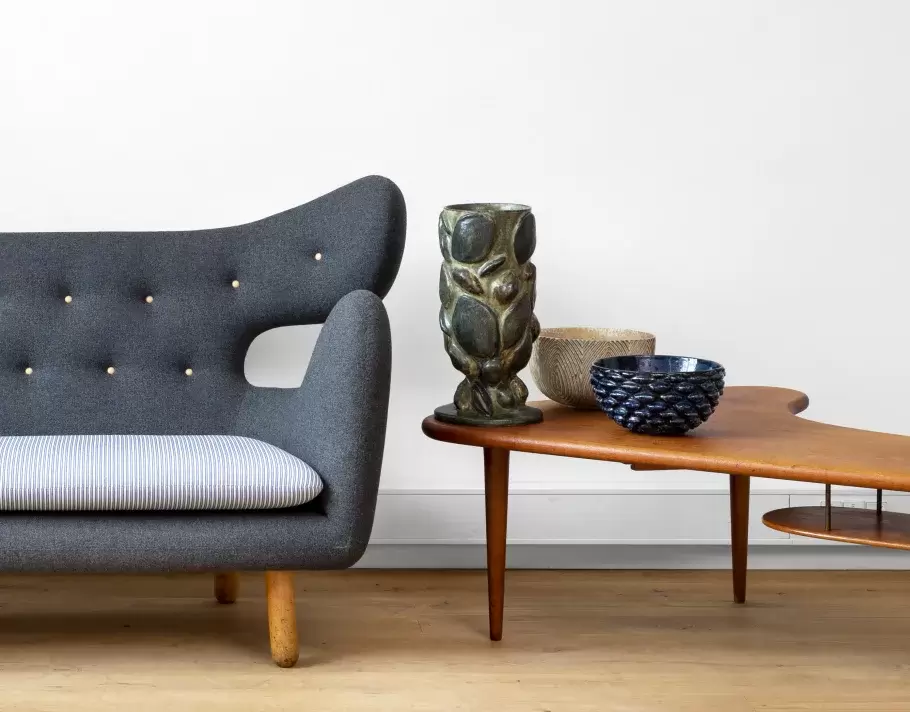It all started in 1939, when Juhl had just dropped out of school from the Royal Danish Academy of Fine Arts’ School of Architecture, and went to work for architect Vilhelm Lauritzen on the construction of the Radio House in Copenhagen. It was long before the trained architect created some of the most iconic pieces in the history of Danish Modern, and before he came to fame. In his spare time, young Juhl designed furniture for private customers, and this was one of these cases. He was asked by cabinetmaker Niels Vodder to design furniture for his booth at the Cabinetmakers’ Guild’s Exhibition, and for that show, he created this set, which Vodder fabricated. With its organic form that look more like sculptures by Jean Arp than pieces of furniture, and the look was sensational and provocative in its day.
When it was brought by a Danish family to the auction house, the original grey wool with blue and white fabric were discovered under the current upholstery, just like seen in the original photograph (below), and that original upholstery was replicate. They will be offered for sale in the December sale at Bruun Rassmusen in separate lots: the sofa is estimated at $238,000-$317,000, the highest estimate placed on a Scandinavian 20th-century furniture piece ever.
The Rarest of the Rare by Finn Juhl
The dream of every art dealer and collector, and one that happens once in a lifetime, when discovering the rarest of the rare. It happened this season when a suite by Danish master Finn Juhl, considered completely lost for nearly 80 years, was found. Peter Kjelgaard, Head of the Department for Design and Decorative Art at Copenhagen-based auction house Bruun Rasmussen and one of the world’s top experts on Danish furniture, said that when he saw this suite, he ‘could hardly believe my own eyes. I have worked with Danish design throughout my entire career, but this is the most interesting piece of furniture I have ever had in my care. The sofa is known only from photographs in literature, and everyone in the design world thought it had been lost for good.’

